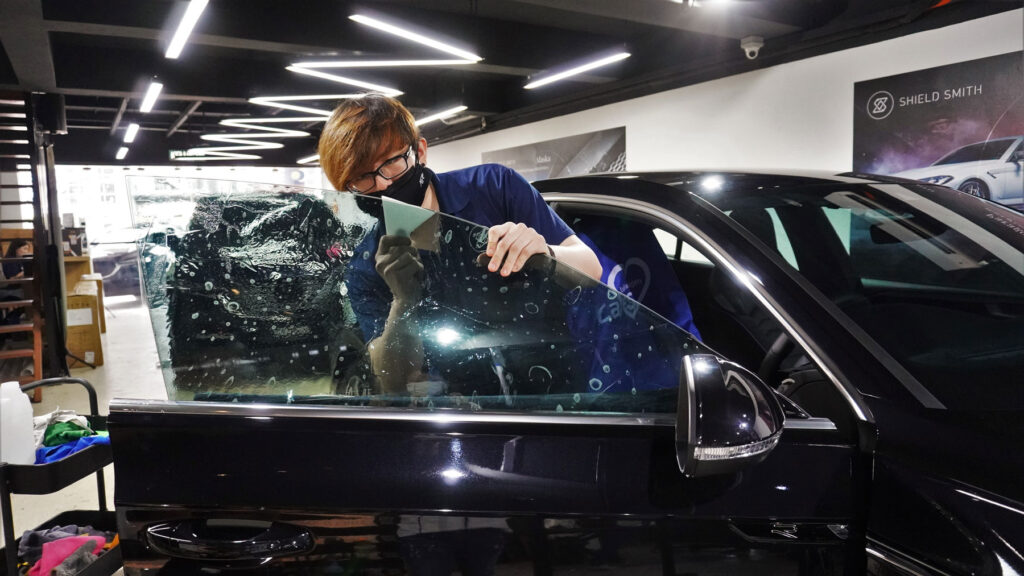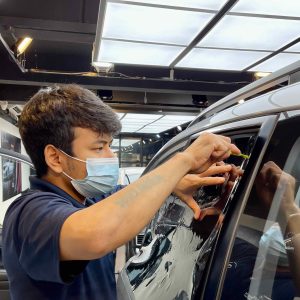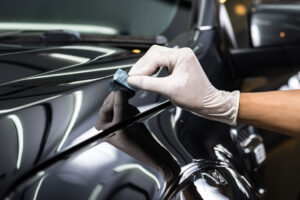Are you looking for good, high-quality window films? Here are the basics of window film knowledge to assist you how to choose car window tint film & getting the best window film product for your car!
1. Car Tint Brand
First thing to consider when choosing a car window tint in Malaysia is the brand. There are many car window tint brands in the market & they all produce various types and qualities of window tint. It is possible that you will end-up purchase from a low-cost brand that will instead give you free bad window tinting. You won’t be able to receive a satisfying experience from it because of its bad quality.
As a reason, you must consider on the brand of window tinting you plan to purchase. Identify if or not this brand is already successful in the market. If nobody else knows it or it is not well-known, don’t choose that car tint (tinted kereta) because it will not last as long as you expect.

2. Cost vs High Quality
Don’t always go for the cheapest tinting because it could likely cost you more in the long run. Let us tell you why & how to choose car window tint film…
In today’s market, low-quality tint always is the most popular marketing product. These are selling well because customers always are looking for the best value for money. So, if you really want to learn more, keep on reading!
- After a year, Heat Rejection drops by more than 50%.
- After a year, the shade discolours quickly.
- After a year window film peel off by itself
- After a year, bubble appears everywhere.
Low-quality products has high tendency to fade, fracture, bubble, peel off, or turn purple. Moreover, these low cost films usually lack heat rejection structure at the same time, tint colours will fade quickly. In other hand, the high-quality ones will last much longer.
Car Tint Market Price:
The cost of standard tinting services in Malaysia range from RM800 to RM2000. Anything below the price range is really not considered very good, and anything over RM2000 will usually get you the greatest quality of car window tinting, including for your own safety and security, as well as an auto defence with car window tinting insurance (if any).
3. Tinting Specifications And Requirements
The perfect tinted film to glazing your windows comes with a complete list of specifications and measurements. These major specifications are broken down here so you can make an informed selection:
‣ Visible Light Transmission (VLT)
The visible light transmission, or VLT, is one of the most essential window film ratings to consider. In short, VLT is the amount of light from outside that is allowed to pass through the film. It’s similar to the darkness in your film, but there are some differences.
For instance, a window tinted with 30% VLT allow 30% of the sunlight to pass through as blocking 70%. As a result, a lower VLT % implies a darker tint and less light passing through.
Besides from that, the % would inform you how much UV, heat, security, and glare reduction is offered. When choosing a tint level, please note that the original glass’ VLT and the film’s VLT would be combined. As a result, the VLT value is lower than anticipated.
‣ Ultraviolet (UV) Rejection
The Ultraviolet (UV) Rejection is defined as the percentage of ultraviolet energy reflected away from the window film. UV-A (320–400 nm), UV-B (290–320 nm), and UV-C (290–320 nm) are the 3 kinds of dangerous UV rays (100 to 290 nm). Paints, fabrics, and leather have been known to fade and deteriorate caused by Ultraviolet UV-B. It is also known for causing sunburns and other skin conditions, some of which can lead to skin cancer.
The ozone layer and the Earth’s atmosphere filter the majority of UV-C. A higher UV rejection percentage means that UV rays are really not getting through to the film that much. UV rejection of 99 percent is considered to be the best rate in protecting you and your house form harmful rays.
‣ Infrared Rejection (IRR)
The total amount of infrared rays blocked by the window film, whether through absorption or rejection, is known to as infrared rejection. Only 53% of total solar energy is infrared rays, which should never be mistaken for heat.
IRR energy has a wide different wavelengths, ranging from 780 to 2500 nm. More infrared rays are blocked from reaching the film when the IRR is higher. As a reason, the majority of heat passing through is reduced, allow for a cooler condition to be maintained.
‣ Total Solar Energy Rejection (TSER)
TSER (total solar energy rejection) is regarded as the most important criteria to consider when choosing the best window film. The total amount of heat rejected by the window film is known as TSER. UV rays, visible rays, infrared rays, or solar heat all are types of solar energy.
When the TSER value of a window film is higher, the film conducts less solar heat. The film’s high quality performance ensures all-around protection from the effects of solar energies.
4. Smart Tag & GPS Friendly
Another essential point on how to choose car window tint film is to make sure the colour tint is acceptable with Smart Tags and GPS. It is also pointless to spend more money on colour tint which can minimize heat by a significant proportion but aren’t functional while using Smart Tag/ GPS.
Find out some of the best reviews of Shield Smith Malaysia on Google.
5. JPJ Certified ( Tinted JPJ )
Tinted JPJ regulation 2022 is another factor while understanding how to choose car window tint film & choosing tinted glass for your car. It’s one of those things that people often ignore and, as just a result, end up in legal problems when driving.
This certification is issued by the tinted JPJ, which is a Malaysia legal organisation that sets specific requirements to be met for all cars. If they are not fulfilled by any car, it will not be certified, perhaps put the owner of the vehicle in legal actions.
In addition to receiving this certification, your vehicle’s windscreen must have a visible light transmission of more than 70%, while the front side of your windows must have a visible light transmission of 50%, and the remainder of the windows must have a visible light transmission of 0%.
These ratios are important to have in your car’s windows because with this amount of visible light transmission, you can easily drive without being distracted by the reduced VLT.
So, make sure your car fulfils all of these criteria and obtains the tinted JPJ credential because it will not only secure you from legalities, but may also save your life in the event of a severe and deadly car accident.





